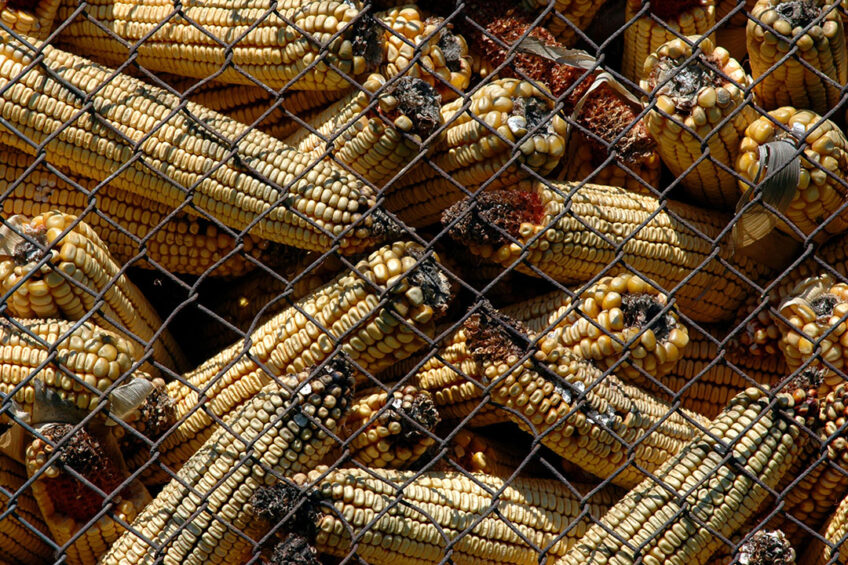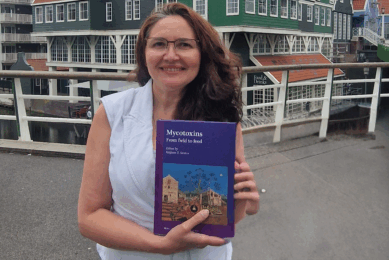Atmospheric cold plasma technology degrades mycotoxin in grains

Mycotoxin contamination of grains is one of the biggest concerns for the food industry leading to quality loss, human and animal health issues, and significant financial losses. Atmospheric cold plasma is an emerging non-thermal technology with mycotoxin degradation potential. This article will discuss this novel technology, the mechanism of action, and the existing challenges that need to be addressed.
Each year, more than 25% of the grains produced worldwide are contaminated with mycotoxins. Conventional and advanced decontamination techniques such as mild heat treatments and microwave processing have limitations including thermal damages to flavour and nutrition, low efficacy, detrimental effects to human health and environment, low feasibility, and heat resistance. Hence, more effective, and practical methods such as atmospheric cold plasma treatment are needed to maintain grains high quality, fresh appearance, and extended shelf life of livestock feed.
Atmospheric cold plasma technology
Atmospheric cold plasma is an emerging non-thermal technology with mycotoxin degradation potential without affecting food quality. Upon increasing the internal energy of a solid, it turns into a liquid, then into gas, and ultimately into an ionized state. This ionized state of a gas which is comprised of free electrons, atoms, and photons is described as “plasma”. Plasma is categorised as thermal or nonthermal. Nonthermal plasma or cold plasma has a temperature less than 60 °C.
The 2 main effective species in air plasma process are:
- Reactive oxygen species (ozone, singlet oxygen, superoxide, peroxide, and hydroxyl radicals) and
- Reactive nitrogen species (nitrogen and nitric oxide radical) play an important role in mycotoxin degradation.
Atmospheric cold plasma production
Dielectric barrier discharge is a safe, cost-effective method used to generate atmospheric cold plasma by producing plasma discharge between 2 parallel electrodes, where both or at least one electrode is wrapped by a dielectric. In dielectric barrier discharge atmospheric cold plasma, the discharge is blocked by a dielectric barrier layer, such as alumina, glass, silica glass, or ceramic materials. In addition, thin enamel or polymer layers cover one or both electrodes to avoid a spark or arc discharge.
Factors affecting the atmospheric cold plasma treatment
Process, product, and microbiological factors impact the efficacy of dielectric barrier discharge atmospheric cold plasma treatment in open and in-package environments.
Process factors include:
- voltage,
- frequency,
- current,
- type of gas,
- relative humidity,
- temperature and flow rate,
- material,
- thickness, and spacing of electrodes and barrier,
- treatment time,
- headspace,
- exposure pattern type, and
- electric field strength.
Product factors include:
- product type and composition,
- surface characteristics, and
- water content.
Microbiological factors include:
- the type of pathogen,
- initial count, and
- growth phase.
Atmospheric cold plasma mechanisms of action
Accumulation of surface charge creates total electric force exceeding the total tensile force on the membrane which in turn leads to electrostatic disruption and cell death. In addition, gas discharge produces energetic ions, radicals, and reactive species which cause oxidation and damage the cell membrane or cellular components. Reactive oxygen species from atmospheric cold plasma interact with lipids, proteins, and DNA and change the functions of biological membranes and cellular biomolecules. Furthermore, the intense electric field of atmospheric cold plasma breaks the cell membrane and creates bacterial cell leakage and loss of cell functionality. Factors including the chemical reaction of reactive species produced during atmospheric cold plasma with mycotoxin, decomposition of the mycotoxin after collision with electrons and ions, and UV light contribute to the cleavage of mycotoxins by atmospheric cold plasma treatment. Moreover, during atmospheric cold plasma treatments, the temperature of the sample does not rise to more than 60 °C, and hence no thermal degradation of the mycotoxin is expected.
Heat treatment in combination with atmospheric cold plasma
Heat treatment is a common method of mycotoxin reduction in the food industry. Studies by Bretz and colleagues (2006), Shanakhat and colleagues (2019), Vidal and colleagues (2015), and De Angelis and colleagues reported significant reduction in DON concentration at high temperatures (above 140 °C) and a positive correlation between temperature and time of heat treatment on the degradation rate of DON. However, a study by Feizollahi (2023) used moderate heating (80 °C) for 25 minutes to increase the DON degradation efficacy of atmospheric cold plasma. But this combined method did not result in any reduction in DON concentration.
What challenges is the food industry facing?
There are some limitations in the application of dielectric barrier discharge atmospheric cold plasma treatment for soft feed due to the production of localised hot streamers which leave visible marks; however, this method is useful for treating hard solid foods such as nuts. In addition, atmospheric cold plasma treatment has high oxidative action which impacts the bioactive compounds and components including lipids and proteins in livestock feed, thus limiting its potential for high-fat high protein foods. Considering the integral complexity of atmospheric cold plasma treatment and the additional complexity of food products with various constituents, size, shape, and surface characteristics, it is required to develop custom designed dielectric barrier discharge systems for food product decontamination applications. Furthermore, surface characteristics of the substrates affect the microbial survival during atmospheric cold plasma treatment. Therefore, further knowledge about the atmospheric cold plasma chemistry and the microbial inactivation mechanisms by individual atmospheric cold plasma components is needed to optimise the treatment for specific products. In addition, it is recommended to focus research on better understanding of reaction mechanisms, antimicrobial pathways, the impact of atmospheric cold plasma on food quality and safety to avoid probable side effects on animal health.
Concluding remarks
The atmospheric cold plasma is a promising technology applied in the livestock food industry for mycotoxin degradation due to its antimicrobial properties, radicals and reactive species, and minimum impact on food quality attributes. Atmospheric cold plasma treatment can be used in the production and processing lines for various grains to maintain high quality, fresh appearance, and extended shelf life. Although this treatment method may not be able to completely replace conventional sterilisation processes used in the food industry due to the limitations of technology. Moreover, further research is required to understand the impact of various product and process parameters and their interactions on the mycotoxin degradation efficacies of atmospheric cold plasma.











